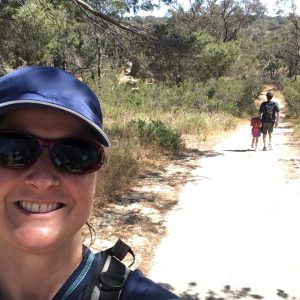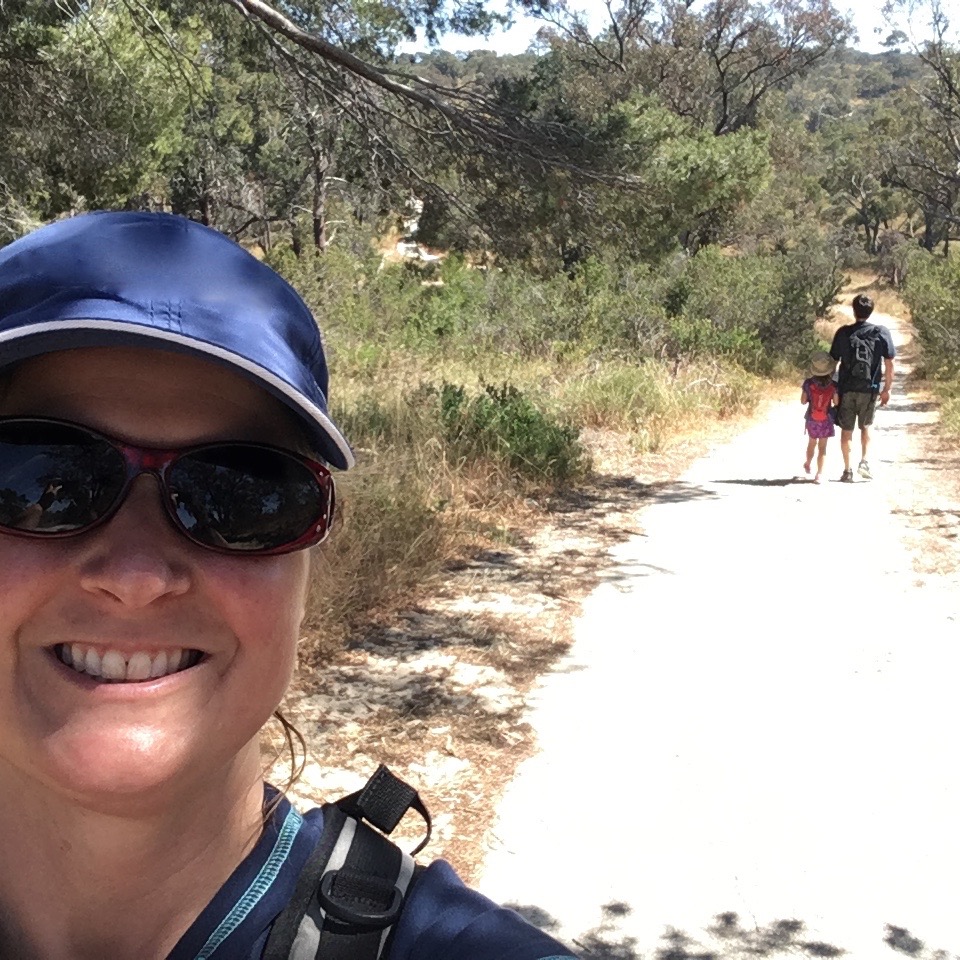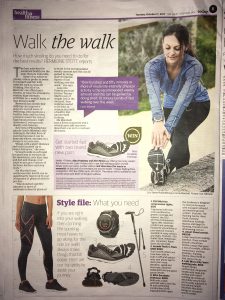I recently contributed my thoughts on the benefits of walking for “Walk the Walk”, an article that was published in the West Australian earlier in October. Since walking is a very cool thing to do and has lots of health benefits, I thought I’d share my responses to the paper’s questions with you here so that you can vary your walking for better health.
What are the main health benefits to walking as a form of exercise?
1) Walking improves a persons overall sense of well-being.
Walking can elevate your feelings of engagement, mood and self-esteem, while helping to reduce the symptoms of chronic stress, depression and anxiety. It can also help improve the quality of your sleep.
Part of the reason for this is that exercise, walking included, stimulates a release of endorphins. Endorphins reduce our perception of pain and stimulate a positive outlook.
2) Walking increases cerebral blood flow.
It is widely accepted that walking helps to lift your mood. Earlier in the year, researchers at New Mexico Highlands University gained a little more insight into how by studying how the impact of the foot with the ground affects blood flow to the brain. Specifically, they found is that during walking or running, “the foot’s impact sends pressure waves through the arteries that significantly modify and increase the supply of blood to the brain. Speculatively, these activities may optimize brain perfusion, function, and overall sense of well being during exercise.” 3) Walking reduces the risk of developing certain diseases.
Walking can help maintain a healthy body weight and promote weight loss. It also helps to reduce the risk of developing chronic illnesses such as cardiovascular diseases by lowering your blood pressure and bad (LDL) cholesterol while elevaing your good (HDL) cholesterol. Walking also helps to reduce insulin resistance and Type II diabetes. Webmd In her Psychology Today article, “Get out and walk, your brain will thank you for it” Dr Susan Krauss Whitbourne, explains that regular routine of moderately intense aerobic exercise such as walking may also help “strengthen your brain and memory” and prevent dementia later in life. Additionally, according to yourbrainmatters.org.au, there is some evidence to suggest that a lack of exercise actually increases risks for developing dementia. Their recommendation is to follow the Australian Department of Health National Physical Activity Guidelines which recommends that adults aged 18-64 years should be active on most or all days of the week, and that they participate in 2 1/2 to 5 hours of moderate intensity activity as well as 1 1/4 to 2 1/2 hours of vigorous physical activity per week and engage in muscle strengthening at least 2 days each week. We know weight-bearing exercise builds bone density, but people frequently overlook the fact that bone density is mainly increased in the regions where the weight-bearing load is placed. So people frequently are under the impression that if they go into the gym and lift weights that they are building up the bone density of their entire skeleton, which simply isn’t the case. For example, lying down on a bench and doing bench presses won’t do anything for the bone density in your femur or pelvis, which are common areas for breaks and fractures in seniors. One of the best ways to build up bone density in the femur and pelvis is to walk, especially during your youth. If you want to learn more about this, listen to Body Mechanist Katy Bowman. She talks about this in her, “Katy Says” podcast “Dem Bones” episode 48. Granted the legs do the majority of the work while walking, but walking is a whole body exercise when you consider that an efficient gait includes reciprocal arm swing. You can also increase the whole body effort and focus more work into the lateral side of your quadriceps and into your glutes by climbing hills at a brisk pace. You can also engage more areas of your body, especially through the hips and ankles, by varying the gait pattern of your walk. I learned this from my friend John Polley when I coached at his studio, Be Free in North Beach, Western Australia. To achieve this, all you have to do is get creative with the foot placement of your steps. Who says that going for a walk means that you have to walk forward all of the time? At the risk of people giving you a quizzical look, you can vary your steps by taking a few paces sideways, backwards and in random patterns. You can even do funny pigeon toe walks with your toes pointed inwards or penquin steps with your toes pointed out. To increase the workload through your legs include a series of sit and reach motions every 10 steps in your routine. The general recommendation for disease prevention is to walk briskly or exercise everyday for at least 30 minutes. You can do it in one 30-minute session or break it up throughout the day. For the best mental health benefits, I recommend spreading it out into 2-3 brisk walks to stimulate more even cerebal blood flow through the day and to keep the mental outlook bright and lifted. Walking can be very effective for aiding weight loss when used in conjunction with a healthy diet and strength training. Walking everyday for at least 30 minutes will help your body strengthen, tone and move better. Exactly how much walking you need to do for weight loss depends on several factors, including how many calories you are consuming, the level of intensity that you are walking at, how active you are throughout the day outside of your exercise activities, as well as how much fat you want to burn, and how much time you are giving yourself to burn it. Make it convenient and enjoyable so that you want to do it and it becomes a routine. For example walk to do local errands. One of my clients takes a hand trolley and walks to do the family grocery shop. If you have to drive your car to an appointment, consider parking it and walking the last 10 minutes to your destination so that you are incorporating more walking and movement into your day. The pressures of modern living in urban areas make it hard for a lot of people to relax. Walking in green spaces with lots of vegetation or blue spaces near the ocean, lakes or rivers have beneficial health effects that go beyond just being pretty. Natural environments or tree-lined avenues as opposed to city streets, have been shown to be more effective at calming peoples minds and reducing the tendency to brood or ruminate over the same thoughts. NYTimes “How Nature Changes the Brain” Being in these settings, combined with a break from the constant sensory onslaught to our eyes and ears from our modern urban surroundings, helps us relax our minds and allows us to take a respite. Our bodies thrive on variety, so try to change it up and choose paths that offer elevation changes with flats, climbs and descents. This will obviously help stimulate your heart rate and burn more calories if your goal is to get leaner. It will also help to improve your overall strength, reactivity and fitness because the forces that your body has to respond to are very different when walking on level ground than when climbing or descending a hill. Additionally, vary the terrain of your walks and get off of the pavement. By getting off of the sidewalk and onto natural unmanicured surfaces such as grass, gravel or sand as much as possible, we allow our joints and muscles to move through a greater range of motion. Our feet, ankles and hips are designed to handle the ups and downs and varying angles of the natural ground. If all we do is walk on hard, flat and even surfaces all of the time, these joint complexes start to lose the ability to move fully and we become less fit overall. Walk briskly and get your heart rate up to a moderate intensity at least 120 minutes per week. Research indicates that brisk walking provides better protection against heart disease and dementia rather than casual strolls. If you are at risk for these conditions, check with your doctor before embarking on an new intense walking program. Webmd, “Is Walking Enough?” If you aren’t used to going barefoot you’ll want to start slowly and begin by walking short distances on soft surfaces. The idea is to gently improve the strength and mobility in your feet and to give the rest of your body time to adjust to the geometrical changes as well. Many people’s feet are hobbled by their shoes. They develop painful bunyons after a lifetime of wearing shoes that pinch their toes together. Some may experience painful symptoms in the bottoms of their feet when they walk because their arches aren’t used to flexing and their toes have forgotten how to grip the ground when they walk, or perhaps their calves and hamstrings are short and taught because they wear a shoe with a heel, men included. As each individual is unique and their body has specific dynamics particular to their history, no single solution can be generalised to everyone’s feet. However, gently starting a routine of exploring barefoot movement can be beneficial to a lot of people and may help alleviate persistent problems. The best activities for sustained health benefits are the ones that you enjoy and can do often. Walking fits those criteria. Getting the most from your walking means adding a little variation and variety into your walking experience. For instance, change up where your walk, when or the time of day that you walk, how far and how long and your pace or how fast you walk. You can also add variety into your gait; with long or short strides, walking forwards, sideways, backwards and adding a few crouching or sitting motions in between strides. Our bodies and brains crave variety to thrive. 2) Lake Claremont 3) River walks – Minim Cove Mosman Park – paved 4) CBD Bridge and foreshore walks 1) Kings Park – DNA Tower down Broadwalk Vista to Synergy Playground 2) Kings Park Botanical Gardens – Offers a variety of flats and hills and a variety or surface terrain from paved or brick to grass, pebble or bark. 1)Bold Park – Mostly moderate to Difficult. Paths are mostly hard pack or loose sand. Some trails include steep slopes. 2) John Forrest – to Swan View Tunnel. Mostly a wide path but moderate because it is on gravel and a considerable portion of the trek is not shaded during summer months. Mostly level gravel surfaces. The tunnel is wet and dark inside. 3) Lesmurdie Falls at Mundy Regional Park. Pickup the trail from parking areas near the bottom of the falls to access the lower region of the falls. 1) Eagle View Trail – John Forrest 2) Lesmurdie Falls, Mundy Regional Park. Start from the top of the Falls. Gentle to Difficult – Lesmurdie Falls at Mundy Regional Park. 3) Bells Rapids 4) Kings Park – Kokoda Track for a vigorous climb. Gentle: Moderate: John Forrest – to Swan View Tunnel, Moderate because it is on gravel. Mostly level gravel surfaces. The tunnel is wet and dark inside. Remember if you’re comfortable you’re more likely to to do it etc… I am a proponent of wearing minimal shoes to help promote foot strength, mobility and function. But transitioning out of traditional shoes to a minimal shoe takes patience and time. There are some running trainers that are in between full on traditional and minimal style shoes. They mainly have the qualities of a minimal shoe but are padded and may have some arch support in the shoe. I recommend them for transitioning to stronger, more mobile feet. The qualities you want to look for in these types of shoes are: I was introduced to Altra shoes several years ago when I was making my transition from traditional shoes to minimal shoes. Back then, the Altra Women’s shoe that I purchased had a wide toe box, zero heel drop and flexible sole that was padded. A perfect combination for building up strength and mobility in my feet when they needed it. I was due for a new pair of Altra shoes and on my recent trip to the U.S. and I was excited at the prospect of getting a new pair. Sadly, I discovered that Altra seems to have abandoned the flexible sole for a firm sole just like in other traditional trainers. Some people may like this, but I can no longer recommend Altra shoes as a transitional shoe or as a padded minimal running shoe. Sigh. 2) Nike “Barefoot-Like Running Shoes” – store.nike.com 3) Merrell “Barefoot” series – merrellaustralia.com.au 1) Xero shoes – xeros.com This is my affiliate link for Xero shoes. If you place an order, please use this link. Don’t worry, I love my Xero Amuri Cloud shoes and wouldn’t be an affiliate if I didn’t! 2) Vivobarefoot – thewalkingcompany.com.au/brand/vivobarefoot-0 3) Unshoes – sandals – unshoesusa.com/4) Walking helps to increase or maintain bone density in the femur and hip joint.
Watch this TED talk for an eye opener about what is happening to American youth.
5) Walking improves whole body strength and coordination.
How much walking do you need to do per week to get the best health benefits?
How much walking do you need to do per week for weight loss?
Can you give five top walking for better health tips?
1) Make walking convenient and enjoyable.
2) Choose natural environments when possible.
3) Vary the topography.
4)Walk briskly for better health.
5) Spend some time walking barefoot
Can you make a general comment about walking for better health and exercise?
Can you share your thoughts on where to find some of the the best walking trails in Perth – gentle walks, intermediate walks and full on hiking or any hidden neighbourhood gems?
Gentle Trail Walking For Better Health
Gentle to Moderate Trail Walking For Better Health
Moderate Trail Walking For Better Health
Full on Hiking
Kings Park DNA Tower down Broadwalk Vista to Synergy Playground.
Bold Park – Mostly moderate to Difficult. Paths are mostly hard pack or loose sand. Some trails include steep slopes.* Follow the links below for walking maps of the Town of Claremont, Bold Park and Kings Park.

What are the top 5 trainer brands/types that you’d recommend for walking for better health?
My Top picks for minimal shoes/ trainer brands
Minimal shoes with cushioning for walking or running
1) Altra shoes – altrarunning.com Not anymoreMinimal Shoes and sandals without padding for walking or running

